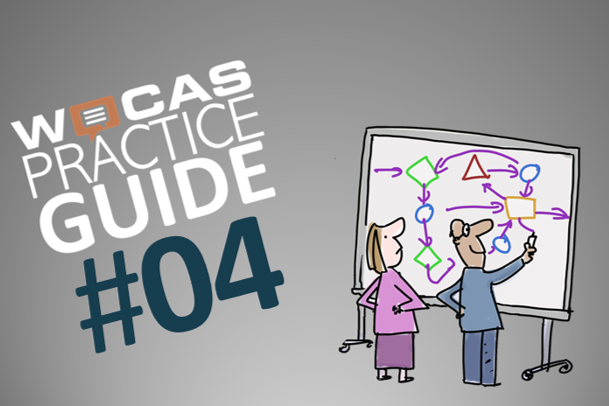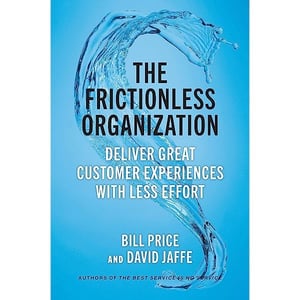
Action instead of reaction: proactively optimize customer experiences and save inbound contacts!
After the Value/Irritant Matrix with its four action strategies was presented in the third WOCAS Practice Guide (-->WPG#03), this article deals with a fifth action strategy ("pre-empt", proactive strategy) as a supplement to the other four strategies: Instead of reacting to customer inquiries and problems, companies should act proactively to anticipate issues and thus avoid customer contacts. Acting proactively reduces friction and gives customers the certainty that the company is looking after them and serving their interests.
What is the problem?
In the previous WOCAS Practice Guide, we showed, based on our experience, that the vast majority of contacts in the value/irritant matrix can be assigned to the Eliminate and Digitize quadrants. Elimination strategies stop the effects that are both disruptive for the company and annoying for the customer and hopefully resolve them "once and for all". Digitization strategies automate routine transaction requirements.
In contrast, proactive strategies acknowledge that things go wrong and situations change, but that organizations can anticipate these changes and take the opportunity to warn or inform customers.
Example: While elimination actions prevent a customer from ordering something that was never in stock, a proactive action informs the customer that an order will be late due to delays somewhere in the process, thus correcting the customer's expectations.
Following their bestseller "The Best Service Is No Service", our long-standing international partners Bill Price and David Jaffe have expanded the Value/Irritant method to include the handling of proactive strategies in their new book "The Frictionless Organization".

From Inbound to Outward
It used to be expensive to get in touch with customers because you had to either call or send letters. These methods were either slow or there was no guarantee that the message would be read by the customer. Letter post was the most common form of communication in the business world for things that didn't need to be done immediately, such as invoices and bank statements.
Meanwhile, the acceptance, speed and low cost of messaging and email have unlocked enormous potential for proactive outreach: Messaging in various forms such as SMS, messenger services, push notifications, automated calls and emails are all cheap, quick and easy ways to alert and inform customers in a timely manner.
These mechanisms mean that companies can move from a reactive "inbound" contact model to a proactive "outward" contact model. Now companies can use proactive strategies to inform customers, move them to action and manage their expectations when things go wrong.
Proactively approaching customers is cheaper than passively waiting for inquiries!
Proactive strategies can be used to make customers feel better about the situation and reduce the impact on them:
- Expectations are set regarding the level of inconvenience and recovery time.
- The customer can "plan around the problem".
- Internal resources are freed up to deal with the problem instead of handling calls.
Proactive strategies therefore require active and timely communication management. They are a win-win for both customer and company as they prevent costly inbound contacts and leave the customer in control.
Example: If the utility company informs its customers of a recent power outage via text message, this helps customers because it shows that the company is aware of the problem and is working on it. At the same time, it prevents customers from receiving calls.
Watch out for spam!
However, the flood of spam and attempted fraud is already prompting some countries to regulate this mechanism. It is therefore important to use them wisely and in the interests of customers. Untargeted text messages and complaints cause companies to lose credibility and render these mechanisms ineffective.
Example: An investment fund sent its customers a poorly worded message with an inadequately explained call to action. More than 70% of the message recipients called the contact center for an explanation, flooding the operation with work that exceeded wait times.
When and where can we be proactive??
Bill and David list many situations in their book where proactive strategies are almost always applicable:
- Customer expectations need to be managed, especially when an agreed-upon schedule cannot be met (e.g., delayed flights or deliveries).
- Events or problems that affect the customer are known to some but not all customers (e.g. software bugs or system errors).
- Lengthy processes have variable timelines that the customer wants to track or understand (e.g. insurance claims, loan applications or job applications).
- Customers should be reminded of future events (e.g. appointment reminders).
- Customers could make mistakes or be impacted (e.g. warnings about missed car services or expiring plans).
- Certain interactions could give the customer an advantage (e.g. pre-registration for tickets to popular events or early health measures).
- Customers may not be up to date with how the business is operating (e.g. new opening hours, new terms and conditions, new locations or new offers).
- Businesses can help customers achieve positive outcomes (e.g. in areas such as health and wealth management).
Businesses of all sizes can be proactive. Many small healthcare facilities such as dentists and other medical practices send reminders to their patients to keep their appointments. This is another win-win situation. Clients get timely reminders, and the practice learns if there are any appointment gaps. Ironically, businesses that are behind schedule often stop communicating, even though the opposite would make sense.
Designing proactive measures also involves choosing the right channel or mix of channels. For example, many airlines now offer both SMS and email notifications of delays.
As companies increasingly communicate with their customers via apps and portals, these can be used in combination with other mechanisms. Customers can be notified by email or SMS that messages are waiting for them in an app where more sensitive data may also be used. This also reduces the risk of messages being perceived as spam and ignored.
Are proactive strategies a kind of multi-tool?
Proactive strategies are used to complement the other four value/irritant action strategies:
- as an interim solution to other measures such as elimination and digitization (e.g. proactive provision of information while other solutions are being developed and implemented). Example: A company receives many calls when orders are not delivered within the promised time window of two days. To avoid these calls, there are two options: redefine delivery time expectations or rethink the entire logistics and supply chain. Both solutions are difficult, time-consuming and expensive. A temporary proactive strategy could help manage expectations around orders that exceed the two-day limit by notifying the customer each time this happens. This can help, but is not a complete solution and cannot fully eliminate customer disappointment.
- as a more cost-efficient solution that achieves a partial result but can be more cost-efficient than other actions.
- as the only response to unavoidable or unplannable situations. Companies that acknowledge that they cannot be perfect, but still try to minimize the impact of these shortcomings, often have mass notification mechanisms in place when unavoidable situations arise. They also take the time to think about how they can help their customers even in situations beyond their control, such as extreme weather events or problems with suppliers or third parties.
- as an effective means of controlling a process. This is about expectation management for lengthy processes. Companies should try to provide as many proactive updates as possible to keep the customer up to date and avoid status queries.
All reasons for eliminating or digitizing contacts should be evaluated to see if proactive solutions for any of the above categories could be applied.
How WOCAS® can support you in your analyses
As experts in the market with over 15 years of experience in value/irritant metrics, we have developed our WOCAS® software and refined it over the years to give you maximum transparency in your analyses. The flexible and individual configuration in WOCAS® simplifies your detailed analyses and makes them easy to implement and adapt. This ensures rapid responsiveness on the company side and the effects of your solution steps are immediately visible.

Feedback
We would be very glad to receive likes and comments or if you share our practice tip to make it accessible to other interested parties. You can do this by following our LinkedIn company page.
Want to talk to us? - Great!
We look forward to hearing about your challenges in a non-committal conversation and finding out together how WOCAS can help you.
